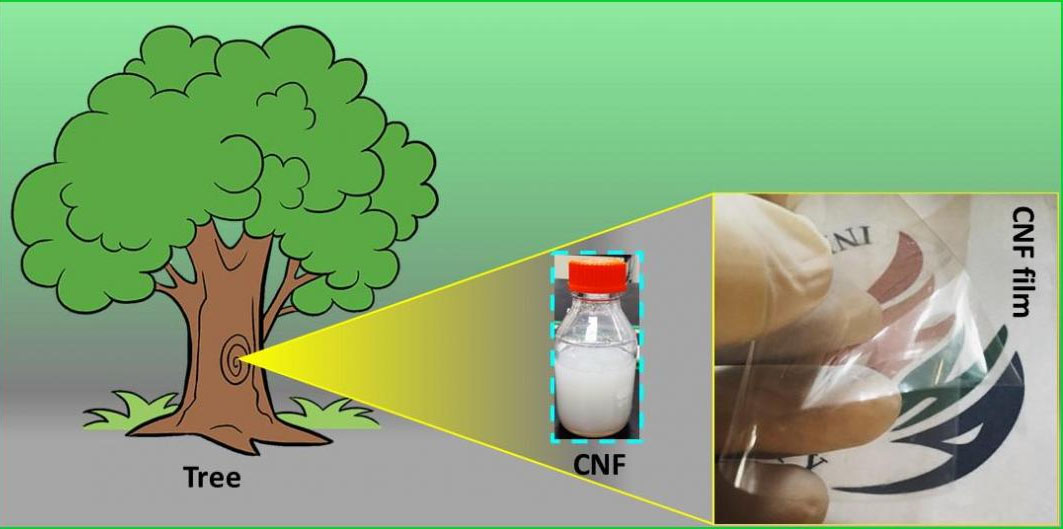| Jan 27, 2022 |
Strong but thin transparent films made from cellulose nanofibers with wide applicability
(Nanowerk News) To meet the demand for strong and tough transparent thin films for sustainable applications, Dr Sunanda Roy from GLA University India has led a multi-national team to successfully develop a novel transparent thin film made from cellulose nanofiber (CNF) reinforced by glycerol & glutalraldehyde (reinforcing glycerol).
|
|
The research has been reported in Carbohydrate Polymers ("Modulation of interfacial interactions toward strong and tough cellulose nanofiber-based transparent thin films with antifogging feature").
|
 |
| A novel transparent thin film made from cellulose nanofiber. (Image courtesy of the researchers)
|
|
The team comprised researchers hailing from Inha University Korea (Dr. Jaehwan Kim, Director of CRC Lab, Inha University, South Korea, Ms Ruth M. Muthoka, PhD Scholar), Birla Institute of Technology Mesra (Dr. Barnali Dasgupta Ghosh) and Newcastle University (Dr Kheng Lim Goh).
|
|
The novelty of the film involves a new and effective way of tailoring the interfacial bonding interactions between the fibers and the glycerol and glutaraldehyde (GA), which functioned as a plasticizer and cross-linking agent, respectively.
|
|
Conventionally, cross-linking is often performed to overcome the weak mechanical properties of native polymer films in order to expand their functional properties and applications but this approach alone also limits the flexibility and toughness, making the film very brittle and unsuitable for many applications.
|
|
On the other hand, the new film revealed enhanced strength (21.1%), stiffness (10.6%), extensibility (100%) and toughness (32.7%), as compared to conventional ones. The optical clarity and antifogging property, of the film could also be enhanced further by applying an additional step to treat the surface of the film to radiofrequency oxygen plasma.
|
|
The cellulose-based film has wide applicability, such as food packaging, oxygen barrier films, agriculture (crop growth), membrane distillation, sensors, biomedical patches, optoelectronic and smart optical devices.
|
|
With the proof-of-concept demonstrated, the team is now looking for investors and new collaborators to support further development to bring the technology readiness level from 4 to 9.
|

